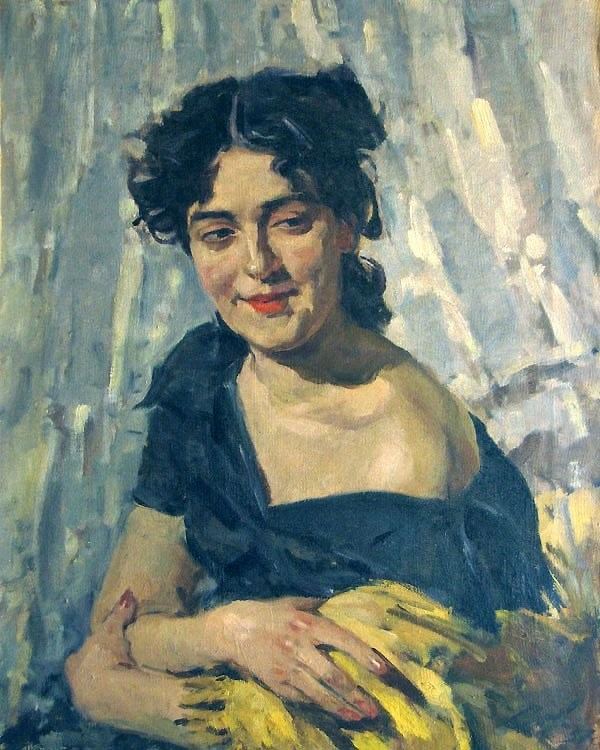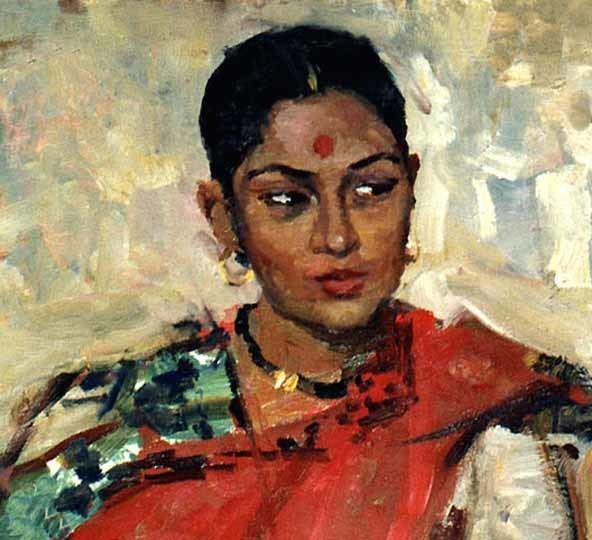Role Artist | Name Lev Russov Movement Realism Period Realism | |
 | ||
Died February 20, 1987, Saint Petersburg, Russia | ||
Lev russov 1926 1987 painting the leningrad school part 2
Lev Alexandrovich Russov (Russian: Ле́в Алекса́ндрович Ру́сов; January 31, 1926 – February 20, 1987) was a Soviet Russian painter, graphic artist, and sculptor, living and working in Leningrad. A member of the Leningrad Union of Artists, he was regarded as one of the leading representatives of the Leningrad school of painting, being most famous for his portraits.
Contents
- Lev russov 1926 1987 painting the leningrad school part 2
- Lev russov 1926 1987 painting the leningrad school part 1
- Biography
- References

Lev russov 1926 1987 painting the leningrad school part 1
Biography

Lev Alexandrovich Russov was born January 31, 1926, in Leningrad. In 1939-1941 he studied at the Art studio of the Wyborg district of Leningrad. In December 1941, along with his mother he was evacuated from the siege of Leningrad in the Gorky region. In 1943, for continuing art education he moved to Kostroma city, where goes to the regional art school. In 1945, in connection with the return to Leningrad Russov was transferred to Tavricheskaya Art School, from which he graduated in 1947.

After graduation Russov entered the first course of Painting Department of Institute of Painting, Sculpture and Architecture namen after Ilya Repin, studied of Yuri Neprintsev and Genrikh Pavlovsky. However, having studied for two years for health reasons had to leave class. In 1951–1955 Russov taught drawing in the secondary schools of Leningrad, while continuing to worked on his painting skills.

Since the mid-1950s, Russov participates in exhibitions of Leningrad artists. At the Spring exhibitions of 1954 and 1955, Russov shows paintings [[:|"A Girl with a Bow"]] (1954), [[:|"At the Sea"]] and "Portrait of Artist Vladimir Kremer" (both 1955), immediately attracting attention as talented painter.

In 1955, for his portrait paintings, Lev Russov was admitted to the Leningrad Union of Artists on the recommendation of renowned artists Piotr Buchkin, Yuri Neprintsev, and Veniamin Kremer. He painted portraits, genre and historical paintings, still lifes, landscapes, worked in watercolors and woodcuts.
In the years 1954-1956 Lev Russov was drawn to the historical genre, creating a series of eight paintings on the novel by Charles de Coster's "The Legend of Thyl Ulenspiegel". Choosing a theme and its figurative embodiment echoed the mood of the Khrushchev "Thaw" and personal freedom-loving aspirations of the author. Shown at the end of 1956 at the Autumn exhibition of Leningrad artists works [[:|"A Birth"]], "On Tortures", "A Death of father", "On the Fields of the Motherland", [[:|"A Boarding (Insurgent Flandria)"]], [[:|"Till and Lamme"]], "Death to traitors", [[:|"Song of Till"]] (all 1956), first brought the author fame and claimed him as a master of historical painting.
These works, and above all the double portrait of [[:|"Till and Lamme"]], are also interesting in that the artist gave Thill features a close resemblance to the author. This makes it unique in the creative legacy of the artist as self-portraits of Lev Russov are unknown. As a child he lost one eye and did not like to be photographed and a general refusal to pose for portraits, painted by himself or others.
Year of 1955 was awarded to Lev Russov meet peoples, which had a major influence on his subsequent artistic and personal life. At first he met with [[:|Catherine Balebina]] (born December 29, 1933), daughter of Vasily Balebin, the famed military pilot and torpedo-bomber, the Hero of the Soviet Union and Great Patriotic War. Soon she became his wife (the marriage will be officially registered on 31 January 1959), the mother of his son ([[:|Andrew Russov]] was born April 27, 1960) and his principal muse. Charming, lively and full of determination, she posed for Leo Russov as a model for many paintings and portraits. For many years, their partnership created and preserved a world which manifested itself in full force and maximized Russov's artistic talents.
In the same year was born longstanding friendship between Lev Russov and Yevgeny Mravinsky, thanks which we have a few perfect portraits of eminent conductor, created in 1950-1980s.
With the greatest strength pictorial talent Lev Russov revealed in a series of portraits of contemporaries, established in mid-1950s - the first half of the 1960s. Among them are [[:|"Portrait of Natali Orlova"]] (1956), [[:|"Portrait of Catherine Balebina"]] (1956), [[:|"Zoya"]] (1957), [[:|"Portrait of conductor Yevgeny Mravinsky"]] (1957), "Natasha"(1958), "Portrait of an actor Vladislav Strzhelchik" (1957), [[:|"Kira and Zoya"]] (1958), "Young Caster" (1961), "Kira" (1962), [[:|"Portrait of a Son"]] (1965), and others.
The works of this period are in the time of the Lev Russov highest artistic peak as painter and constitute the most valuable part of his diverse artistic heritage. They are distinguished by an extraordinary expressive images, daring compositional decisions, unmistakable artistic taste. The color palette is dominated by pearl and purple hues.
Creative manner of the artist featured a powerful pictorial language, a broad style of painting, sharp composition, interest in the unusual angles. Lev Russov possessing a rare ability to catch the fleeting state of nature quickly put into a canvas picturesque idea - immediately and extremely convincing. He created the images combine the expressiveness of the individual characteristics of a vivid reflection of the typical features of contemporaries.
In his portraits Lev Russov can catch a direct state of nature, which, if prolonged posturing elude the majority of artists. This first impression he knows how to keep to the end and to convey to the viewer. Therefore, the nature of his works live, and this feeling of living eyes of living people - perhaps the most exciting in the works of the artist.
Along with the expressive form of portraits of Lev Russov different depth and psychological images, careful selection and study of nature. This was another important reason for the success of his works. Many of the best works of this period Lev Russov painted in a Pavshino village on the Oredezh river near Leningrad, where in late 1950 settled a group of young artists.
In mid-1960s Lev Russov enjoys wooden sculpture and Russian folk epic. From now until the end of life it becomes the main theme of his work, surpassing the painting. From his hands came out a lot of superb sculptures, from small figurines to large forms, such as "Russian Icarus" and the relief on the epic theme of "Zastava", "Folk singers". In 1970 in Leningrad Physico-Technical Institute named after Ioffe of the Academy of Sciences of the USSR was held a single lifetime exhibition of works by Lev Russov.
Lev Alexandrovich Russov died in Leningrad on February 20, 1987 at the sixty-second year of life from heart disease. His paintings reside in Art Museums and private collections in Russia, Norway, China, Great Britain, Sweden, in the U.S., France, and other countries. Artist's widow Catherine Balebina survived her husband for 15 years and died June 20, 2002 in Saint Petersburg at the sixty-ninth year of life.
